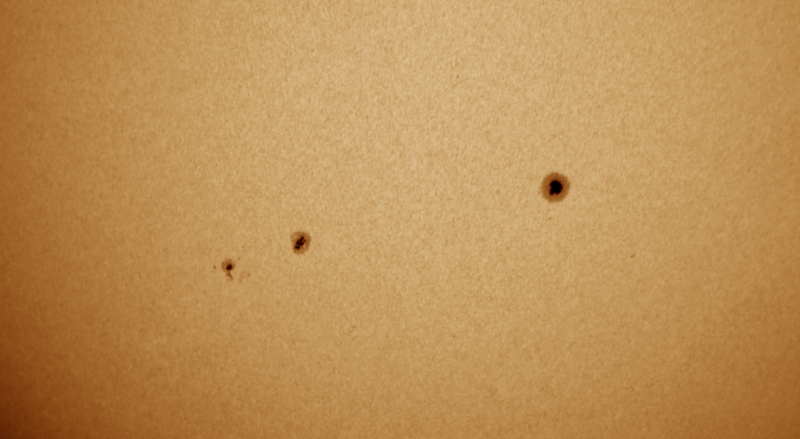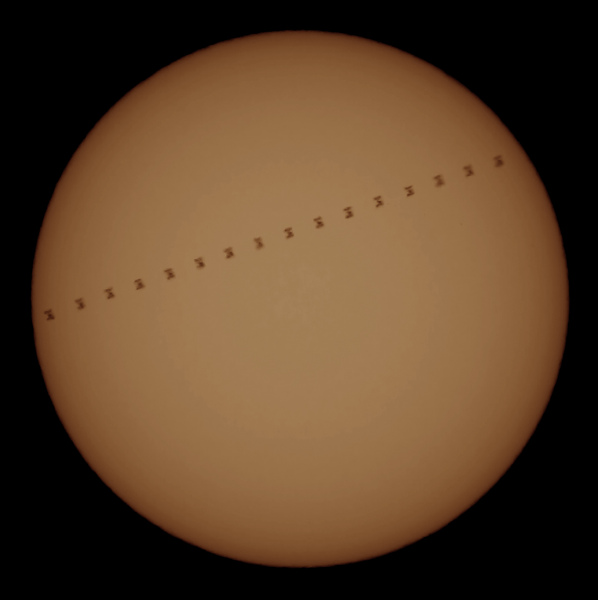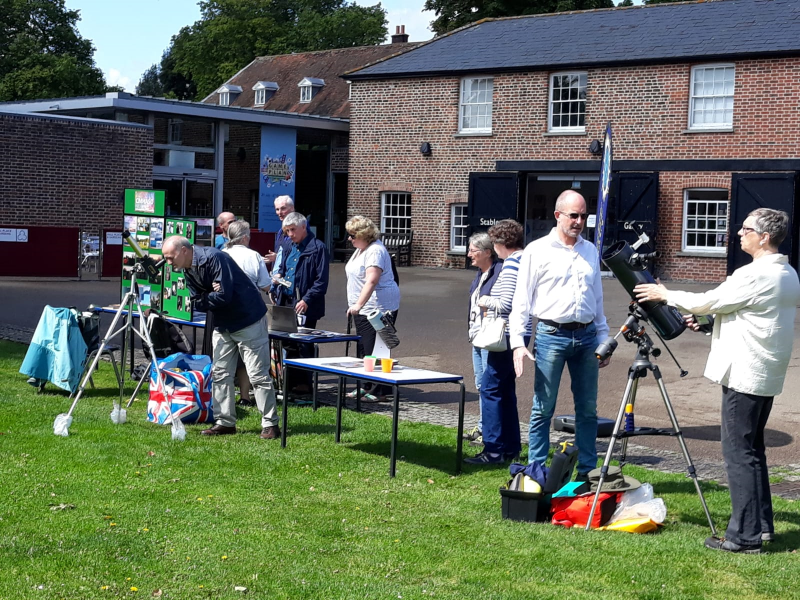[et_pb_section fb_built="1" _builder_version="3.22" global_colors_info="{}"][et_pb_row _builder_version="3.25" background_size="initial" background_position="top_left" background_repeat="repeat" global_colors_info="{}"][et_pb_column type="4_4" _builder_version="3.25" custom_padding="|||" global_colors_info="{}" custom_padding__hover="|||"][et_pb_text _builder_version="3.27.4" global_colors_info="{}"]
The Society were at Hall Place on Sunday 19 August 2018 showing members of the public the Sun using safe observing techniques and talking to people about Astronomy in general. Whilst there was a fair amount of cloud about and the Sun was playing 'hide-and-seek' the day was a massive success.
[/et_pb_text][et_pb_text _builder_version="3.27.4" global_colors_info="{}"]
The Society were at Hall Place on Sunday showing members of the public the Sun using safe observing techniques and talking to people about Astronomy in general. Whilst there was a fair amount of cloud about and the Sun was playing 'hide-and-seek' the day was a massive success.
[/et_pb_text][/et_pb_column][/et_pb_row][et_pb_row _builder_version="4.14.7" _module_preset="default" column_structure="1_3,1_3,1_3"][et_pb_column _builder_version="4.14.7" _module_preset="default" type="1_3"][et_pb_text _builder_version="3.27.4" global_colors_info="{}"]
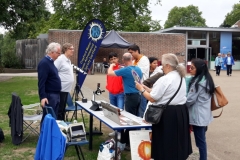
[/et_pb_text][et_pb_text _builder_version="3.27.4" global_colors_info="{}"]
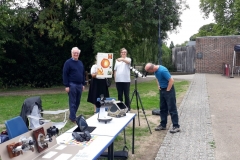
[/et_pb_text][/et_pb_column][et_pb_column _builder_version="4.14.7" _module_preset="default" type="1_3"][et_pb_text _builder_version="3.27.4" global_colors_info="{}" admin_label="Text"]
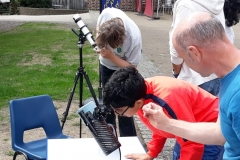
[/et_pb_text][et_pb_text _builder_version="3.27.4" global_colors_info="{}"]
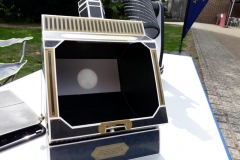
[/et_pb_text][/et_pb_column][et_pb_column _builder_version="4.14.7" _module_preset="default" type="1_3"][et_pb_text _builder_version="3.27.4" global_colors_info="{}"]
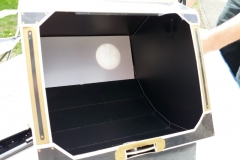
[/et_pb_text][et_pb_text _builder_version="3.27.4" global_colors_info="{}"]
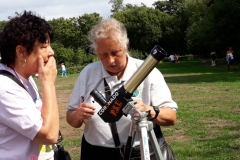
[/et_pb_text][/et_pb_column][/et_pb_row][/et_pb_section]

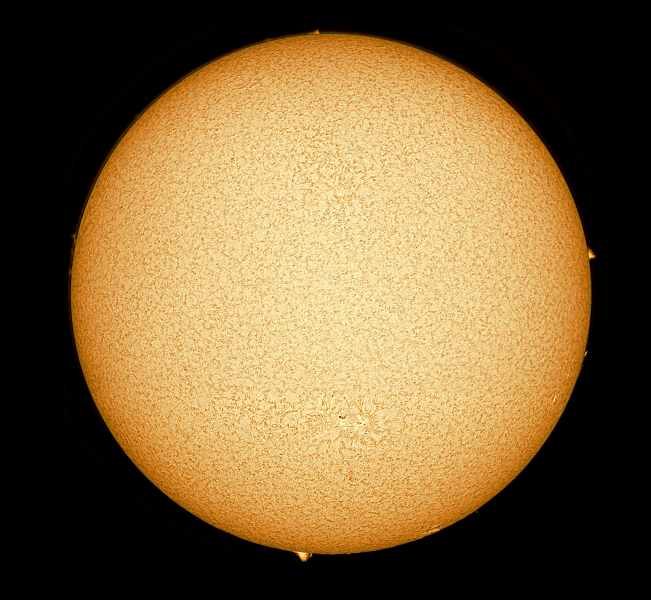 Taken on the 8th of June with a Daystar Solar Scout SS60-DS and a ZWO ASI174MM camera. My 1st proper attempt at imaging the sun in H-Alpha.
Taken on the 8th of June with a Daystar Solar Scout SS60-DS and a ZWO ASI174MM camera. My 1st proper attempt at imaging the sun in H-Alpha.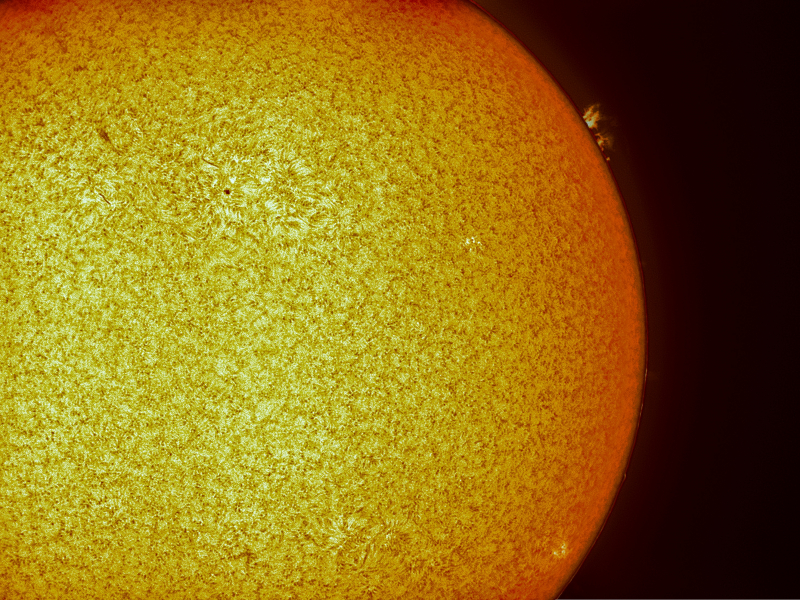 Taken on the 16th of July with a Daystar Solar Scout SS60-DS and a ZWO ASI174MM camera.[/caption]
Taken on the 16th of July with a Daystar Solar Scout SS60-DS and a ZWO ASI174MM camera.[/caption]